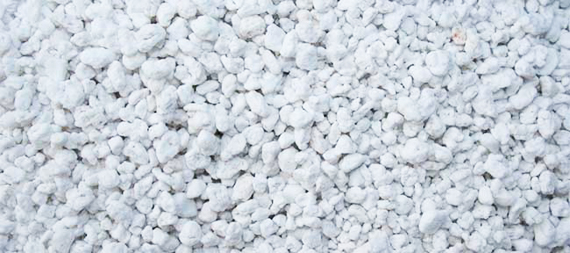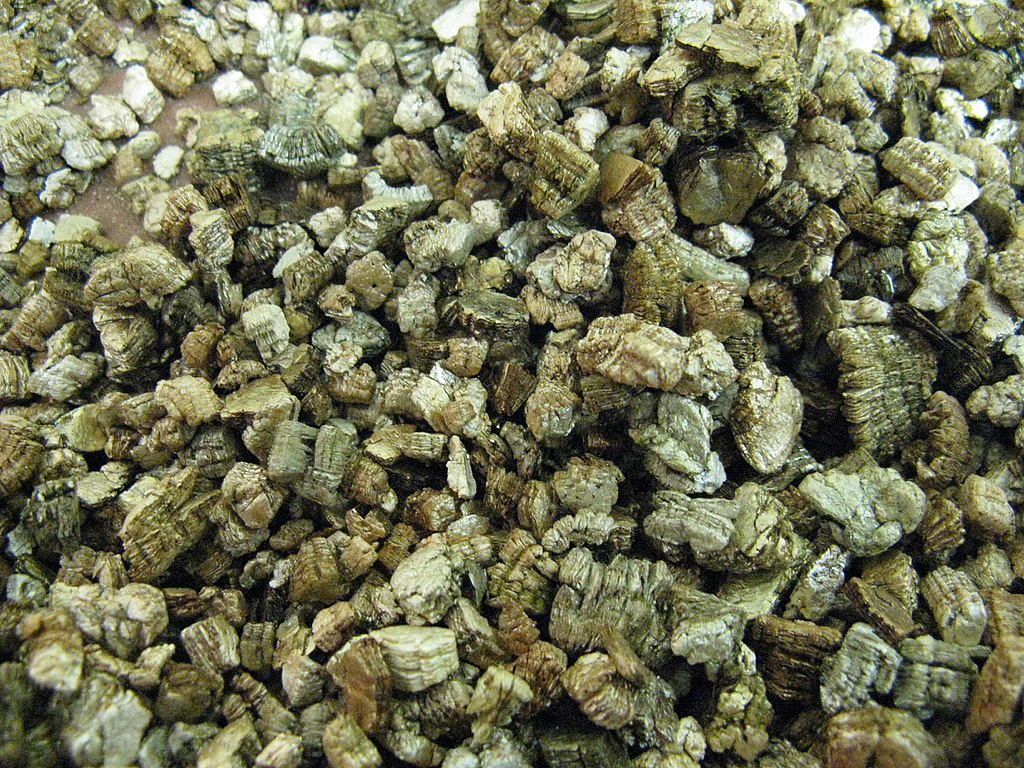Growing Media Used In Hydroponics

Your hydroponic system is soilless, and only the nutrient solution provides the sustenance your plants need to survive. The material they’re grown in is chemically inert but enables the roots to bind to something tangible for the plant’s stability.
Different growing media absorbs varying amounts of nutrient solution, and have pockets of air between the material’s space. How much air depends on the porosity of the media.
There are numerous types of growing media and each have their own properties. Considerations may include the kind of hydroponic system you’re using, which plants you’re growing, or its ease of use.
What is growing media for hydroponics?
Cation Exchange Capacity, Water-Holding Capacity and Air-Filled Porosity
Cation Exchange Capacity (CEC) is the extent to which growing media can hold and exchange cations with the surrounding environment for access by plants. Cations are positively charged ions which will bind negatively charged ions in the growing media and the sum of all of these reactions is referred to at the CEC. Simply put, CEC impacts the media’s potential to absorb nutrient solution and re-release positive ions such as sodium, magnesium, and calcium so plants can absorb them at a consistent rate.
CEC is measured in in milliequivalents per 100 grams (MEQ/100g). The lower the value, the less capacity the media has to hold onto positively charged nutrients.
Similarly, water holding capacity (WHC) refers to how much water growing media can hold on to. The sooner a growing medium reaches its saturation point the more chance of nutrients leaching from it, along with the excess water, into the run-off below. If water is readily absorbed by the medium then the air will be forced out to accommodate it resulting in oxygen depletion at the root zone which, if not controlled in the appropriate way, will kill your plants. Conversely, if you don't sufficiently water media which doesn't absorb it well, your plants will be negatively affected. Factors affecting WHC include the texture, composition, and organic matter present. In a natural setting, the WHC impacts the water available to a plant between periods of rainfall.
The air-filled porosity (AFP) is determined by how many pockets between the growing medium there are which ensures a supply essential oxygen to the plant roots, preventing anaerobic bacteria from propagating. As we've already stated, without enough oxygen, your plants will die. Before death is reached, however, a lack of oxygen is detrimental to the roots ability to absorb water and subsequently nutrients. This is because the absorption is an active process. There are molecular pumps within the cell walls of the roots which require energy to function and without enough oxygen, they cease to work. Ultimately, yield will decrease.
If the medium doesn’t have much air-filled porosity then caution must be taken not to overwater the roots. This is mediated by spacing the time between waterings.
Types Of Media
Rockwool
Rockwool is manufactured by melting basalt rock and chalk together and spinning it to fibers which are then compacted down into a mat and sliced into cubes. High temperatures during production mean the material is inert after being in a higher reactivity environment than you would find at room temperature. Rockwool comes in a hydrophilic (water-loving) or hydrophobic (water-hating) granulate format, or as hard blocks or cubes. The hard blocks, known as “bonded”, are primarily used in hydroponics and many growers choose to use Rockwool in The Drip System.
Rockwool has a CEC of zero, so it doesn't alter or limit the availability of cations in the root zone. There’s a possibility for high optimization of the nutrient solution and with little error and if concentration goes out of balance then it’s easy to remedy. Rockwool's WHC is nearly zero. It will quickly drain from maximum saturation and gaps will fill with air once again.
The percentage of unavailable nutrient solution to your plants grown in Rockwool blocks is around 2%.

Coco Coir
Coco coir is a reusable mixture of coco fiber, coco pith, and chips with a pH range between 6-6.7. Made from the inner pith of coconuts, coco coir originates from coconut palms in the distant lands of Sri Lanka and India.
The WHC of coco coir is high at 88% and can hold onto eight to nine times its weight in water, however, it's advantage can also be its downfall as it can be susceptible to overwatering. However, even when saturated, coco coir maintains AFP of 22%. Coco coir has a CEC around 90-100 meq/100g and contains relatively high potassium (K), and sodium (Na), but low calcium (Ca) and magnesium (Mg). If all four cations were introduced at the same concentrations, Ca2+ and Mg2+ would be absorbed twice as much at the same sites compared to Na+ and K+ due to the extra positive charge and, as a result, you'll need to wash your coco coir with slightly stronger concentrations of Ca and/or Mg supplements to create a chemical buffer. Failure to do so will mean the coco coir removes Ca and Mg from the nutrient solution and it will exchange these cations with the K and Na naturally present, raising their concentrations in the root zone. The unbalance is unhealthy for your plants, and toxicity issues can arise in some species. If you'd like to read more, check this out.
If you choose coco coir as your growing media, be aware you may need to supplement it with calcium-magnesium additives. Alternatively there are pre-mixed nutrient solutions available specifically for coco coir. Mixing coco coir with approximately 30% Perlite (one of the other growing media discussed below) is great for Ebb and Flow systems, the Perlite will improve drainage.

Perlite
Although manufactured throughout the world, Perlite, a siliceous volcanic rock heated to extreme temperatures to form volcanic glass, is primarily produced in China. It consists of relatively large amorphous particle sizes which give a WHC of around 20%, an AFP is 41%, and a CEC close to zero. This means there's a leaching of nutrients from the growing media and you would not choose to include Perlite in systems which utilize the potting material as a supplier of nutrient solution to the plant's roots, for example, Passive Sub-irrigation or the Wick System.
It’s lightweight, chemically stable and has a low density. One disadvantage is that Perlite floats when submerged, but mixing it with different types of growing media improve each of their functioning. For example, improve draining and the ability to hold onto nutrients.

Vermiculite
Vermiculite is a reusable micaceous mineral from South Africa, China, USA, and Brazil. It’s has a neutral pH, is lightweight, and great at buffering. Vermiculite WHC is high, at 100-150 meq/100g, so if the substrate is used on its own then your plants can easily be starved of oxygen at the root zone. Its AFP is medium-low, and CEC is medium. Mixing 25% vermiculite and 75% perlite in your hydroponic system will improve drainage and at retaining moisture.

Expanded Clay Balls
These reusable clay balls are heat-expanded to form sizes of 8-16mm. They’re predominantly manufactured in Europe but originate all over the world. They have low WHC, a high AFP, and a low CEC. The clay balls' pH is neutral and it’s hard to overwater them because of the large gaps in between. They are, however, quite bulky and nutrients can precipitate onto the outside of the balls and take it out of solution. Less for your plants to absorb and the more unbalanced the remaining nutrient solution will become. Expanded clay balls are very common in The Kratky Method - take a look and see how you can make your own.
Before you use the clay balls, you’ll want to wash them to remove any pump-damaging sediment that may coat the balls.

Nutrient Film Technique
Nutrient Film Technique (NFT) is used as an example of a hydroponics system without the use of a growing medium.
As there’s no growing media available to your plants there’s a continuous flow nutrient solution provided to your plants.
WHC is zero as there’s nothing to absorb the water, and if pump failure occurs it won’t take long for your plants to die.
Although it isn’t strictly AFP, aeration of the root system is easy with NFT, however, clogging can happen which could starve the roots of oxygen. Suitable aeration should be worked into the functioning of NFT.
Similarly to WHC, CEC is impossible as there isn’t anything for ions to exchange with.
Nutrient solution isn’t very good at maintaining its pH and constant aeration is necessary to provide suitable concentrations of oxygen. Disinfecting NFT systems is simple and inspecting the roots for disease is straightforward.
Have you seen our other Articles on hydroponics?
The Basics Of Hydroponics | The Kratky Method | Types Of Hydroponics | Deep Water Culture | The Drip System | The Wick System | Lighting In Hydroponics | The Ebb And Flow System | Nutrient Film Technique | Nutrients For Plant Growth | Ventilation For Hydroponics | Growing Media Used In Hydroponics | Hydroponics | The Best Way To Cure Root Rot | How To Choose A Grow Tent | The Best LED Grow Lights | Everything You Need To Know About Nutrient Lockout | The Best Air Pumps For Hydroponics | The Best PH Meters For Hydroponics | What Mom Never Told You About The GH Dual Diaphragm Air Pump |
Terms & Conditions
Subscribe
Report
My comments